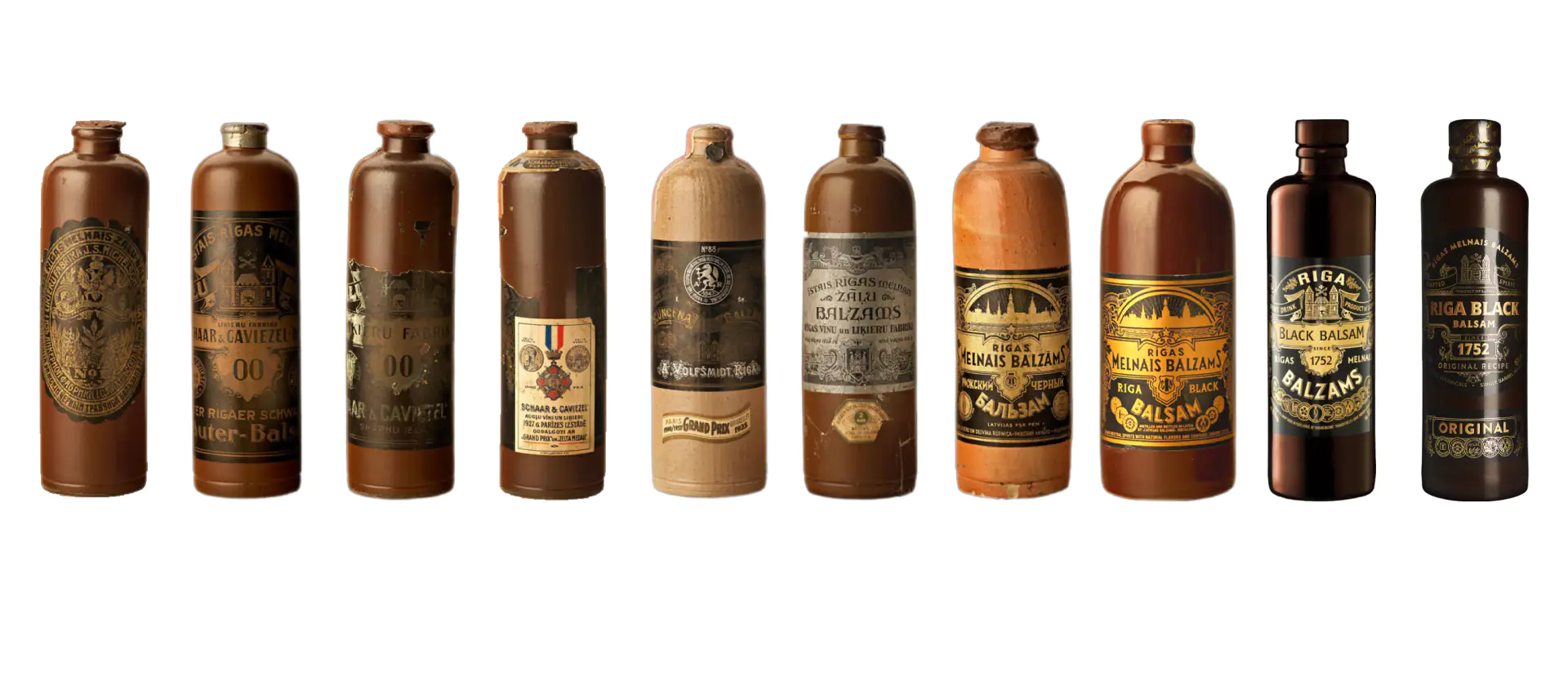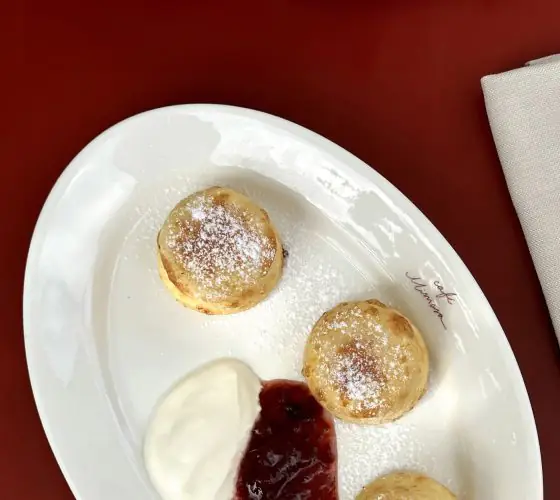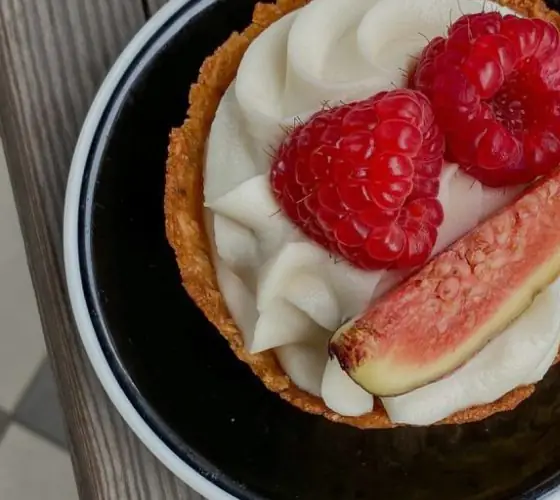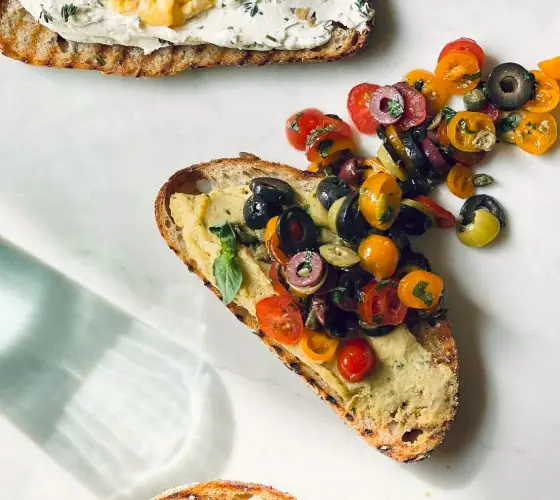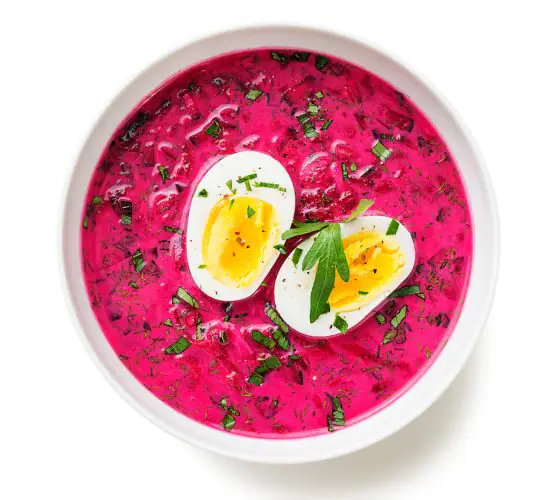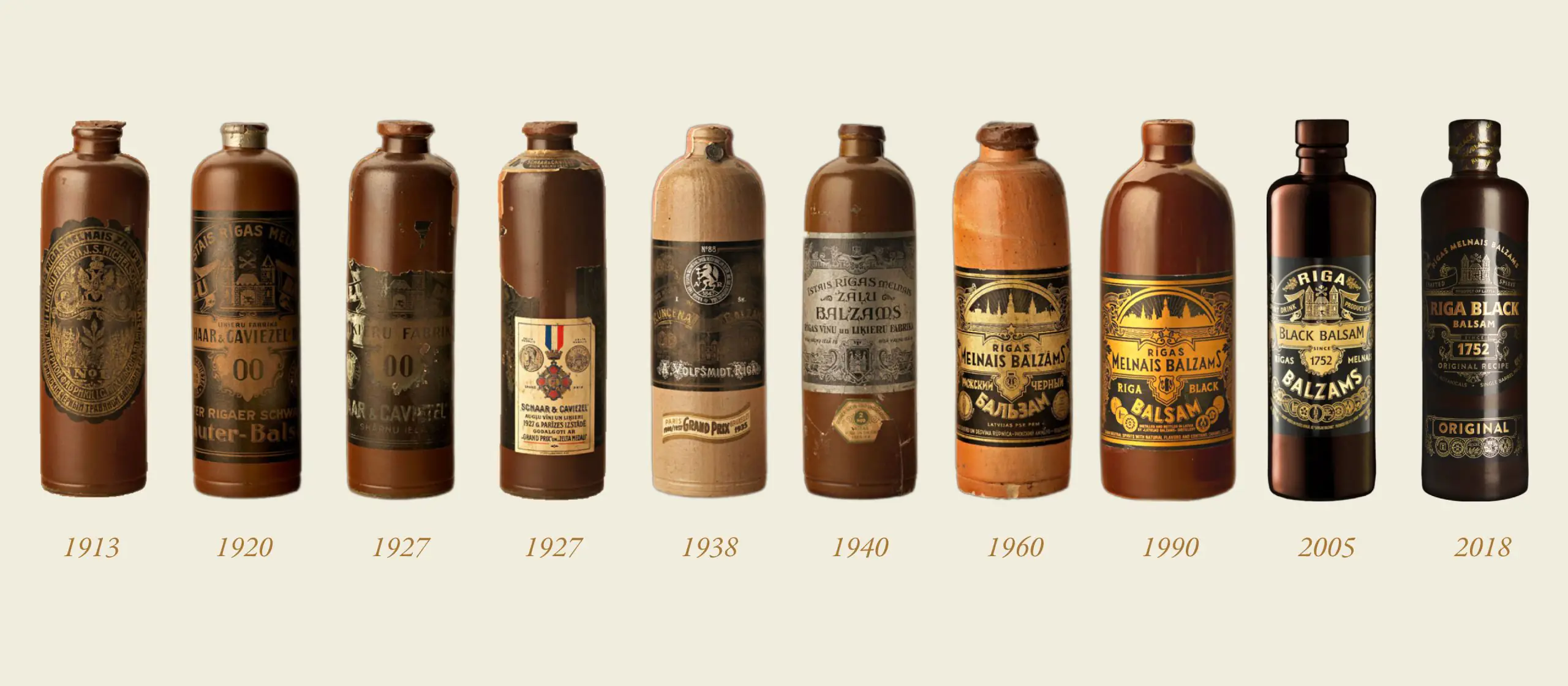
Today Rīgas Melnais Balzams is one of the most recognisable Latvian brands in the world. The logo indicates that the drink has been produced in Latvia since 1752—the oldest documents with the recipe of the balsam refer to this date. This means that the balsam is potentially one of the oldest bitters in Europe.
The origins of Balsam
In the Hanseatic League, herbal balsams spread between the 13th and 17th centuries thanks to European merchants. Marco Polo is considered to be the first of them: at the end of the 13th century, the famous Venetian traveller brought the first herbal infusions from China, which were used as medicines.
It’s unclear who exactly invented the local variation of the drink. The first recipes for the balsam go back to the 16th century, but the exact date and the name of the author have been lost. Since the 18th century, it has been associated with the pharmacist Abraham Kunze. It is believed that Kunze took a vodka infusion of herbs as inspiration, which German dentists used as an anaesthetic.
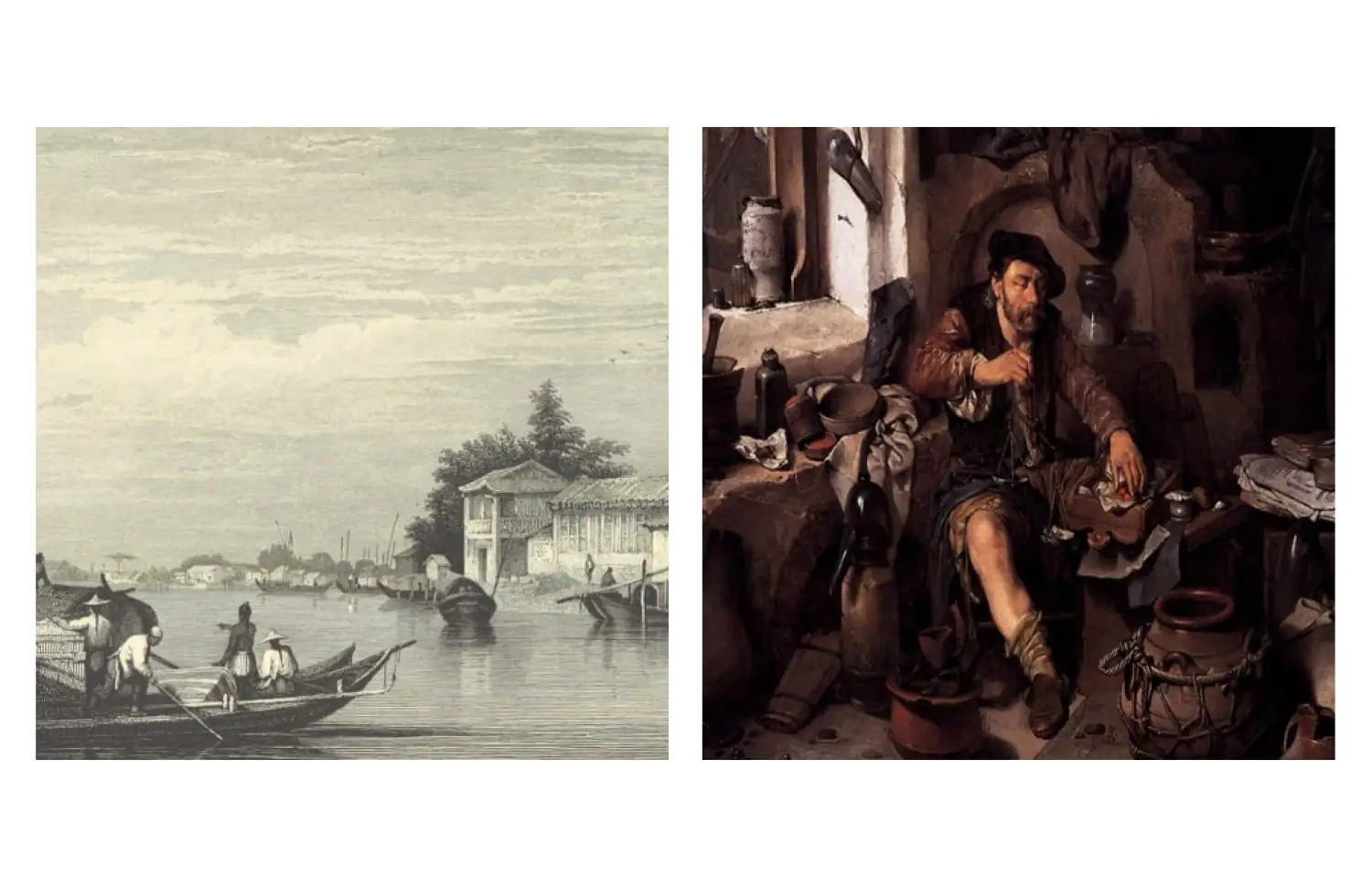
The pharmacist wrote about the properties of this “miracle balsam” in a newspaper advertisement from 1762:
“It is useful in numerous cases, both for fever, stomach cramps, toothache, headache, burns, frostbite and sprains; for tumours, poisonous bites, fractures of arms and legs, especially for closed, stab and chop wounds. The most dangerous wounds can be cured in five days, six at most.”
But it was Catherine II who most prominently advertised the balsam. The Empress, who had recently ascended the throne, arrived in Riga in 1764. During the trip, she felt unwell—according to different versions, she was tormented by either a bout of cholic or a bad headache. None of the remedies suggested by her personal physician helped; Catherine was then given Kunze’s drink.
The Empress was so impressed by the healing properties of the balsam that she granted Kunze the exclusive right to make it. This monopoly helped his business tremendously. However, the strength of the drink was a mere 16 percent alcohol, and it could only be sold as a medicine—it was forbidden to sell it in taverns and other recreational venues.
After Kunze’s death, balsam production was continued by the Riga merchant Semyon Lelyuhin. In 1789, he acquired the exclusive privilege from the Medical Board in St. Petersburg as well as the Senate’s approval to produce and sell balsam. Lelyuhin organised large-scale production at his factory in Lielā Klīversala (now known as Āgenskalns), supplying up to 15,000 clay bottles a year.
The balsam was in particular demand during the Napoleonic Wars: soldiers not only drank it for warmth and recovery, but also made compresses of the drink with vinegar. Contemporaries testified that in this form the drink helped to anaesthetise and heal puncture wounds.
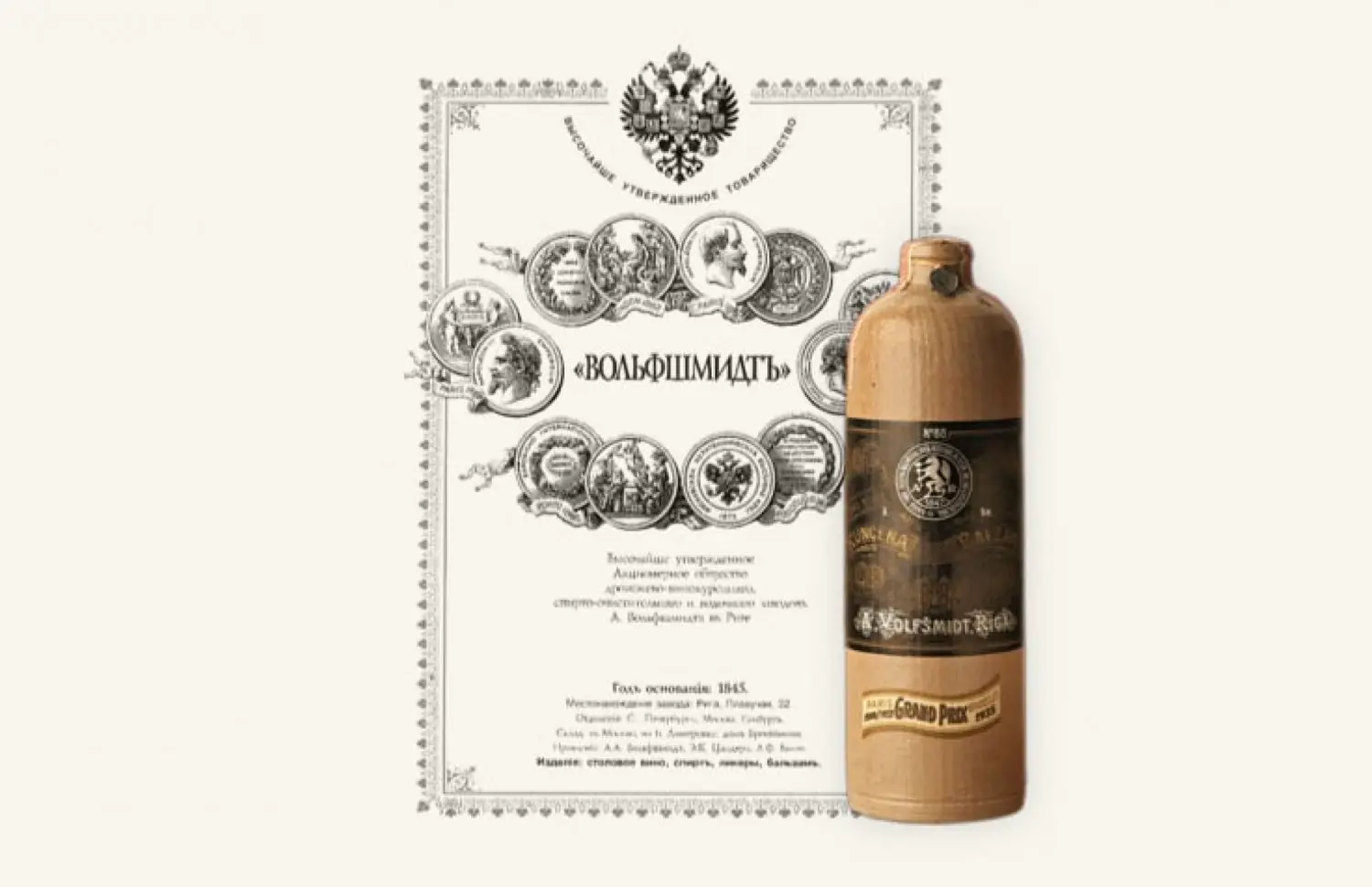
rigablack.com
In the middle of the 19th century, production was taken over by Albert Wolfschmidt, an Austrian entrepreneur who opened a vodka factory in 1845 at 23 Mārstaļu Street within the Old Town. Wolfschmidt sold “Real Riga Kunzensky Herbal Balsam” as an “amusement drink” and increased its strength to 45 percent. But judging by the advertisements of those years, the balsam also acted as a means “to strengthen the stomach”, for colds, for “burns”, “for rheumatism and stiffness of any part”, for toothache, as well as for “homesickness”—i.e. seasickness.
During the First World War Wolfschmidt was forced to leave Riga. In the First Republic of Latvia the production of balsam did not stop, and the name of the entrepreneur was preserved on the label: the drink was produced under the brand name “A.Wolfschmidt’s factory. Riga, Latvia”.
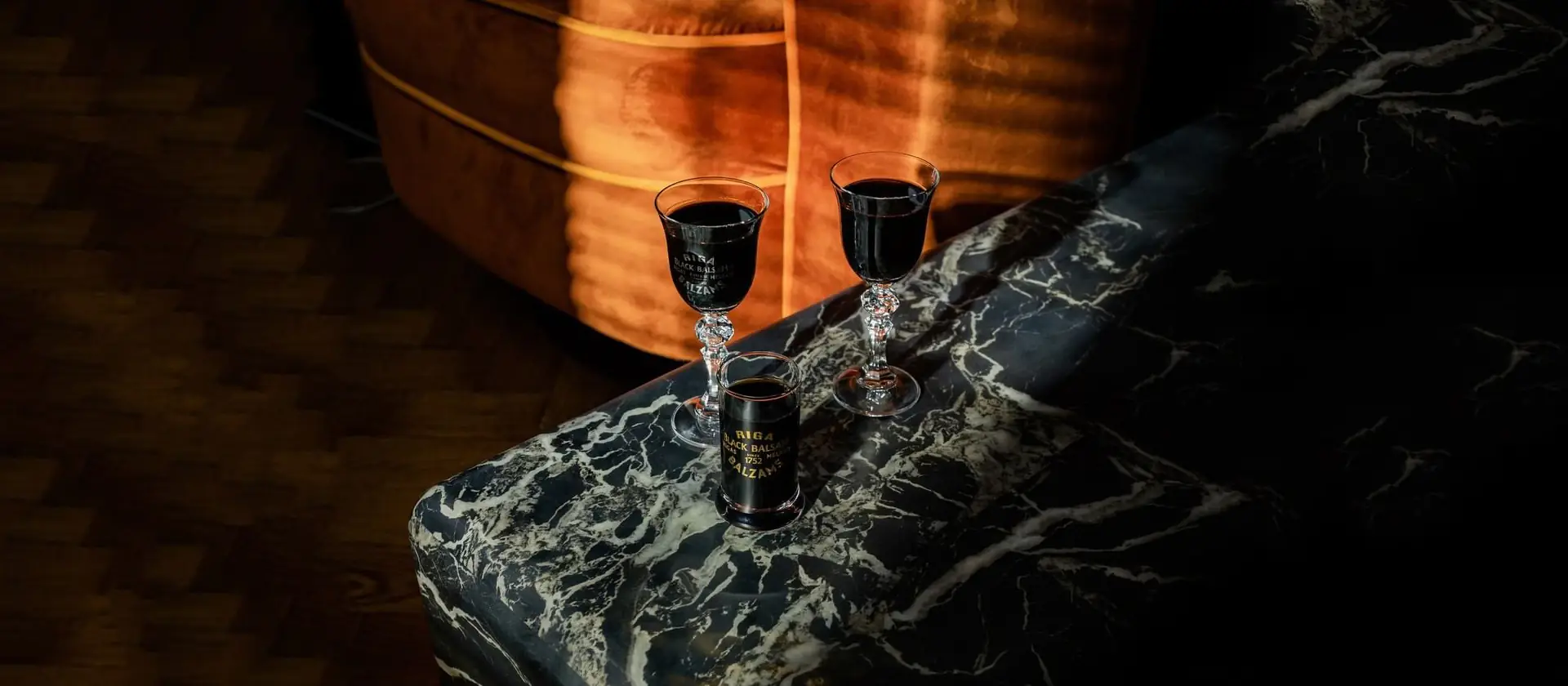
Disappearance and return
The recipe of the balsam had always been shrouded in secrecy: according to tradition, only the head master and his two apprentices knew the full composition and method of production. After Wolfschmidt’s departure, the Shraders dynasty of liqueur masters kept the secret. But they didn’t manage to stay in Riga for long—after the outbreak of the Second World War they left for Germany without giving the recipe even to the then owner of Wolfschmidt’s company. In 1940, after the Soviet troops entered Latvia, the factory was nationalised and given the name “Riga Yeast and Liquor Factory. Formerly “Wolfschmidt’s”.”
And here the history of the legendary drink was briefly interrupted—the recipe was considered lost until the 1950s. As Latvia was under Soviet occupation, the revival of the drink took on great symbolic significance. The employees of the Riga Distillery, which is now known as Latvijas Balzams, took over the process. The main person in this process was the technologist Maiga Podračniece, who had worked in production for 36 years.
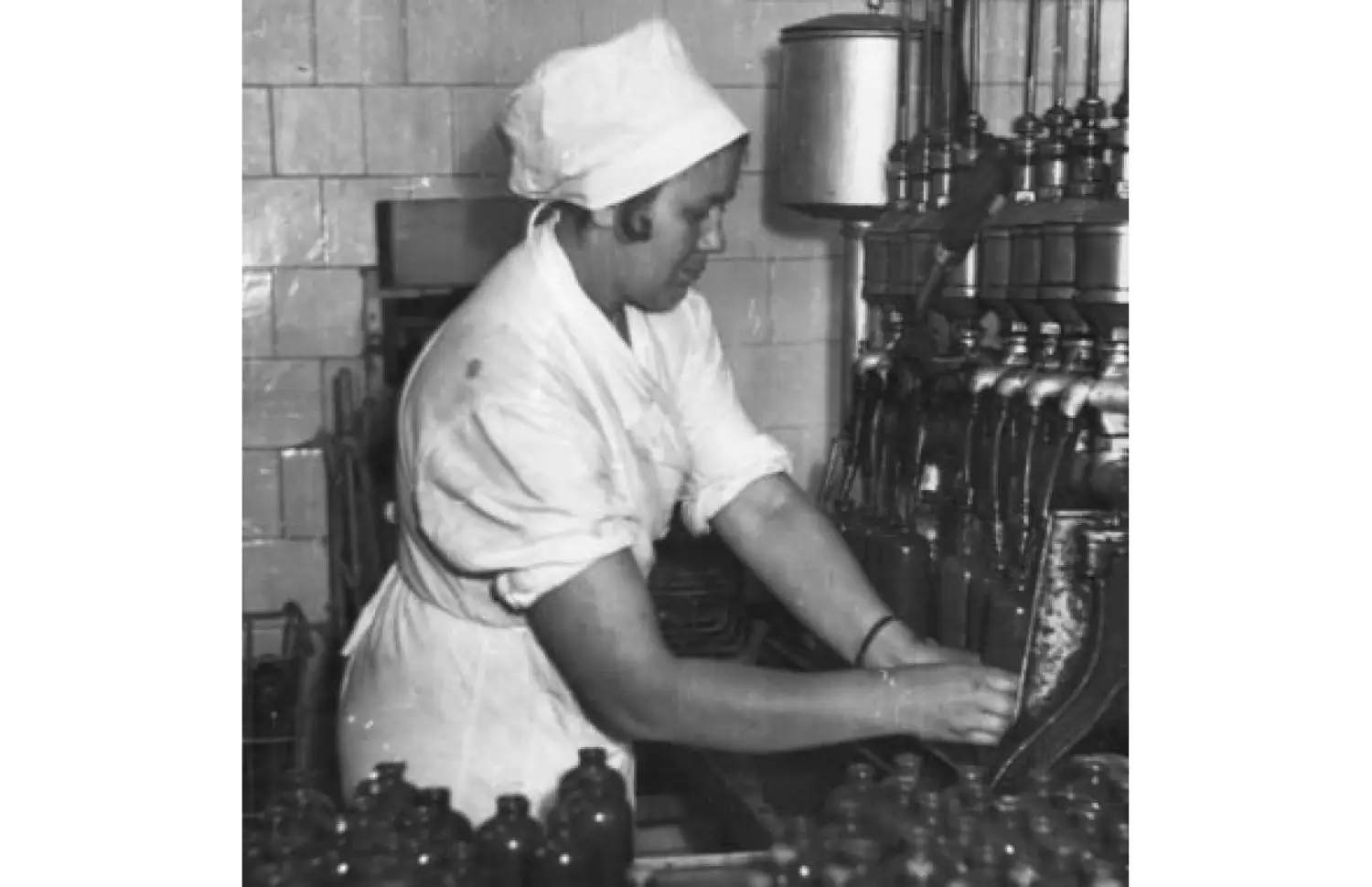
For five years, in an atmosphere of utter secrecy, they reconstructed the recipe from the preserved samples and documents, conducted numerous experiments and tastings, trying to reproduce the original flavour and aroma; this painstaking work was deemed a success in 1954, when the production of the balsam was finally restarted. Since then, its composition and method of production have remained unchanged. On 26 November 1976, 22 years after the recipe was restored, the millionth decalitre of Riga Black Balsam was produced.
During its long history, the drink has won many awards at international exhibitions. From 1865 to 1935 alone, it won 33 gold and silver medals, including the Grand Prix at the World Industrial Expo in Paris in 1900 and the Grand Prix in 1860 at the St Petersburg Fair. In modern times, the number of medals has passed the hundred mark. In 2006, the balsam won the grand prize at the Moscow Prodexpo exhibition.
Ingredients, production and flavours
Riga Black Balm consists of 25 ingredients, one of which is kept secret. The other 24 are natural, including 17 plant extracts. These are mostly roots, spices and herbs, such as valerian, wormwood, black pepper, ginger, Peruvian balsamic oil, gentian and gentian root, St John’s wort, linden flower, birch buds, peppermint, oak bark, orange peel, raspberry juice, blueberries and lingonberries. Most of the ingredients are local—for example, birch buds are collected in the protected Ķemeri bogs.
In addition to plant components, specially prepared filtered water, grain alcohol of the highest purity, brandy, natural honey flavouring and locally produced burnt sugar (the latter gives the infusion its black colour) are used to prepare the drink.
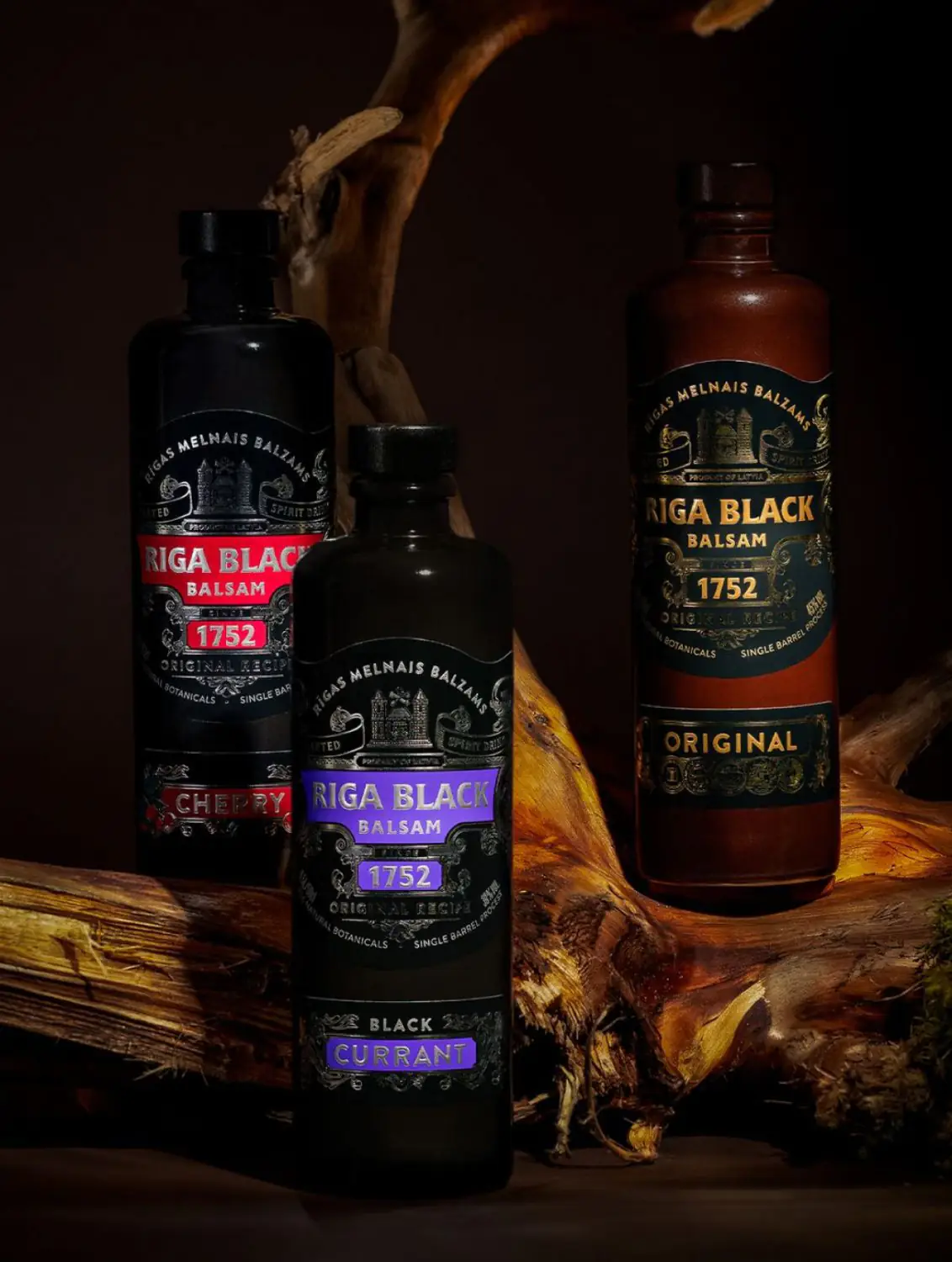

A unique technology of single-barrel infusion is used for production. Plant components are added to the alcohol-water mixture to influence the so-called “essence of Riga Black Balsam”, after which it is mixed with other ingredients—honey, burnt sugar and natural juices.
In addition to the original flavour, there are variations of the balsam with blackcurrant, cherry, tropical fruits, coffee and chocolate.
Another authentic feature of Riga balsam is the ceramic bottle in which it’s housed. Except for the labels and the shade of clay, the design and cylindrical shape have remained practically unchanged since the 19th century and have become another symbol of the continuous tradition.
The use of clay instead of glass for balsam bottles began under the merchant Lelyukhin in order to make the drink cheaper. Ceramic not only protects the contents from sunlight and temperature fluctuations, but also improves the infusion process for six months after bottling.
The correct way to enjoy balsam
The balsam can be consumed on its own, with or without ice, or as an additive—with tea, coffee, ice cream, as well as in cocktails. The brand’s official website and youtube channel suggest using it as a base for a variety of drinks; for example, the Black Shooter shot with peach juice and the Black & Stormy cocktail with ginger beer and vodka. Blackcurrant balsam is used in the Caipirinha cocktail with lime and brown sugar, while coffee bitters are added to the Cherry Espresso long drink with cherry juice.
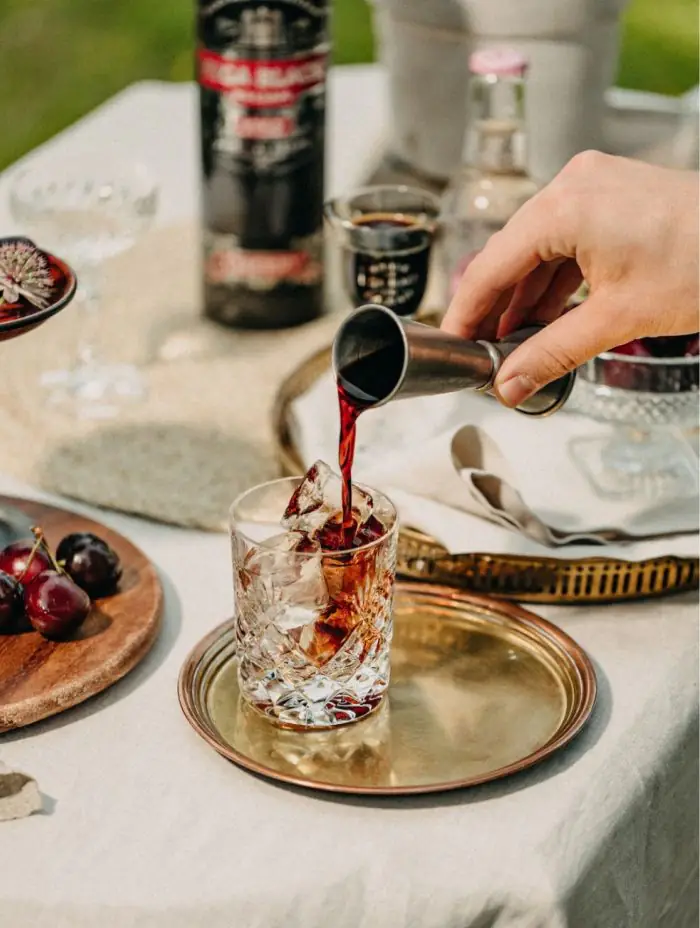
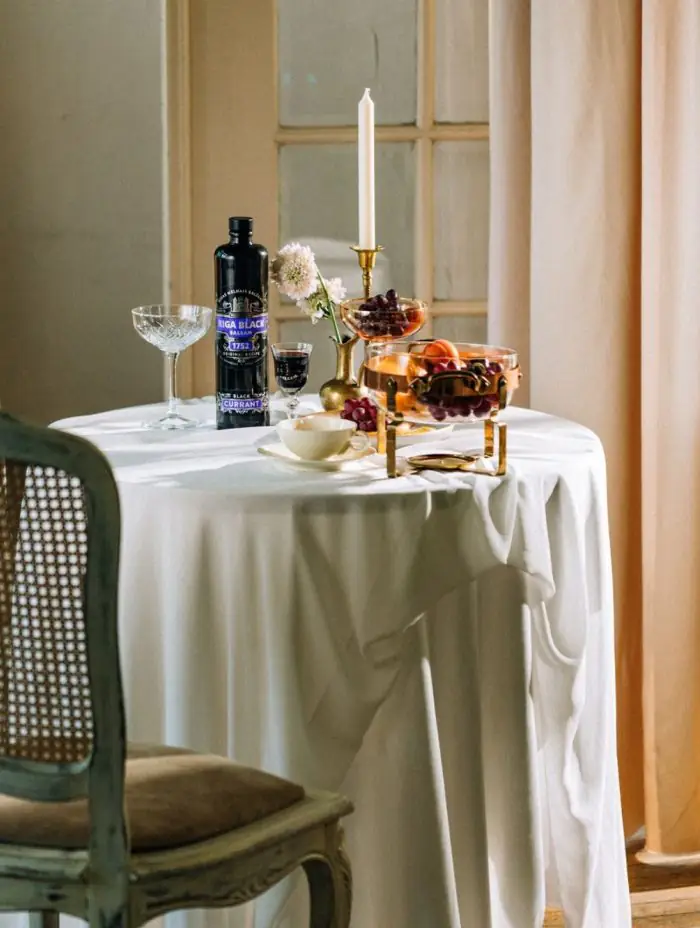
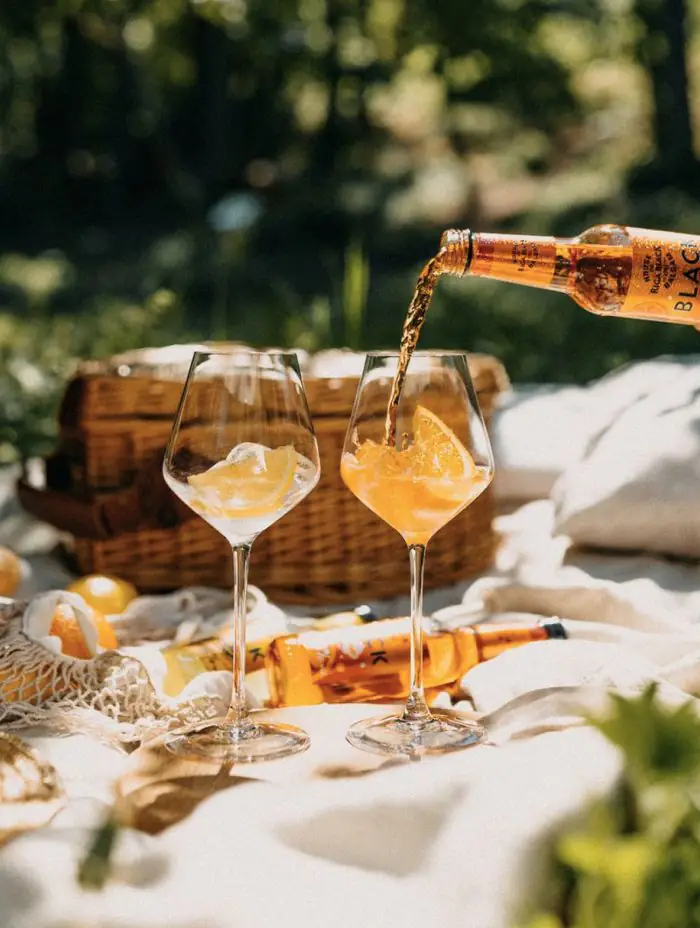
Where to buy and taste in Riga
In the days of the pharmacist Kunze, Riga balsam was sold at the pharmacy in the Mentzendorff house. Nowadays it can be found almost everywhere: it is sold in most supermarkets and alcohol shops. The official sale partners and their locations in Latvia and other countries are listed on the brand’s website. To see the them, click on the “Buy Now” button in the upper right corner of the page.
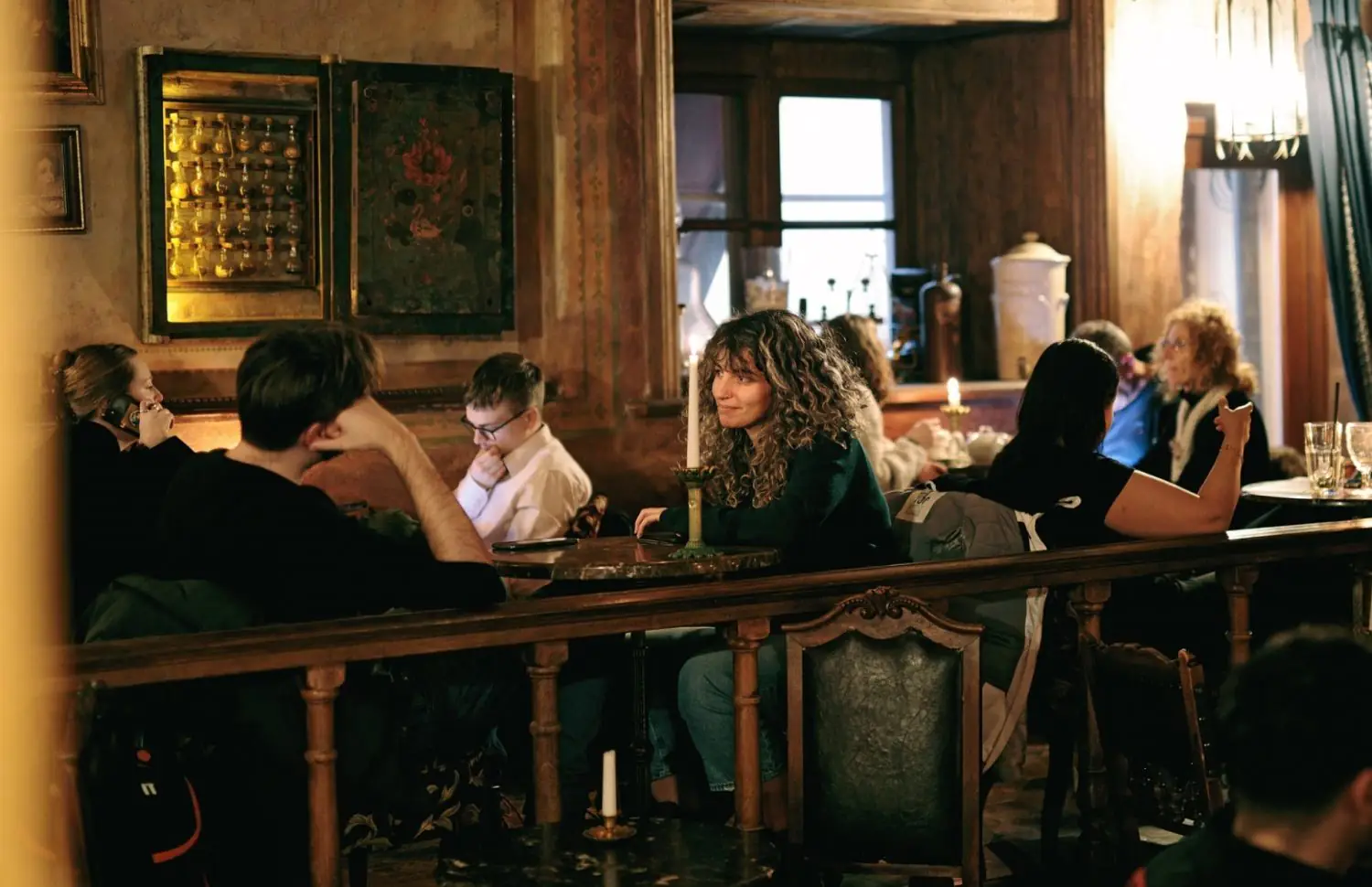
The best place to try the balsam is the Black Magic bar in the Old Town. The atmosphere of the 18th century is recreated there and a set with 24 ingredients of the drink—all but the secret one—is on display. A tasting session costs 23 euros and takes place in a “secret alchemical laboratory where even the walls come to life”. The tasting set includes several varieties of balsam with different flavours, as well as Riga moonshine, coffee, water and chocolate truffles.
At the same establishment you can try a range of balsam cocktails: Riga Ice Tea with orange liqueur, vodka, rum and Coca-Cola (14 euros), Riga Blackcurrant hot drink with heated blackcurrant juice, cinnamon and cloves (9.60 euros), Riga Black Magic with sparkling wine (9.60 euros).
